begin quote from: https://silodrome.com/kawasaki-klr650-diesel/
A Rare Kawasaki KLR650 Diesel-Powered Motorcycle For The Special Forces
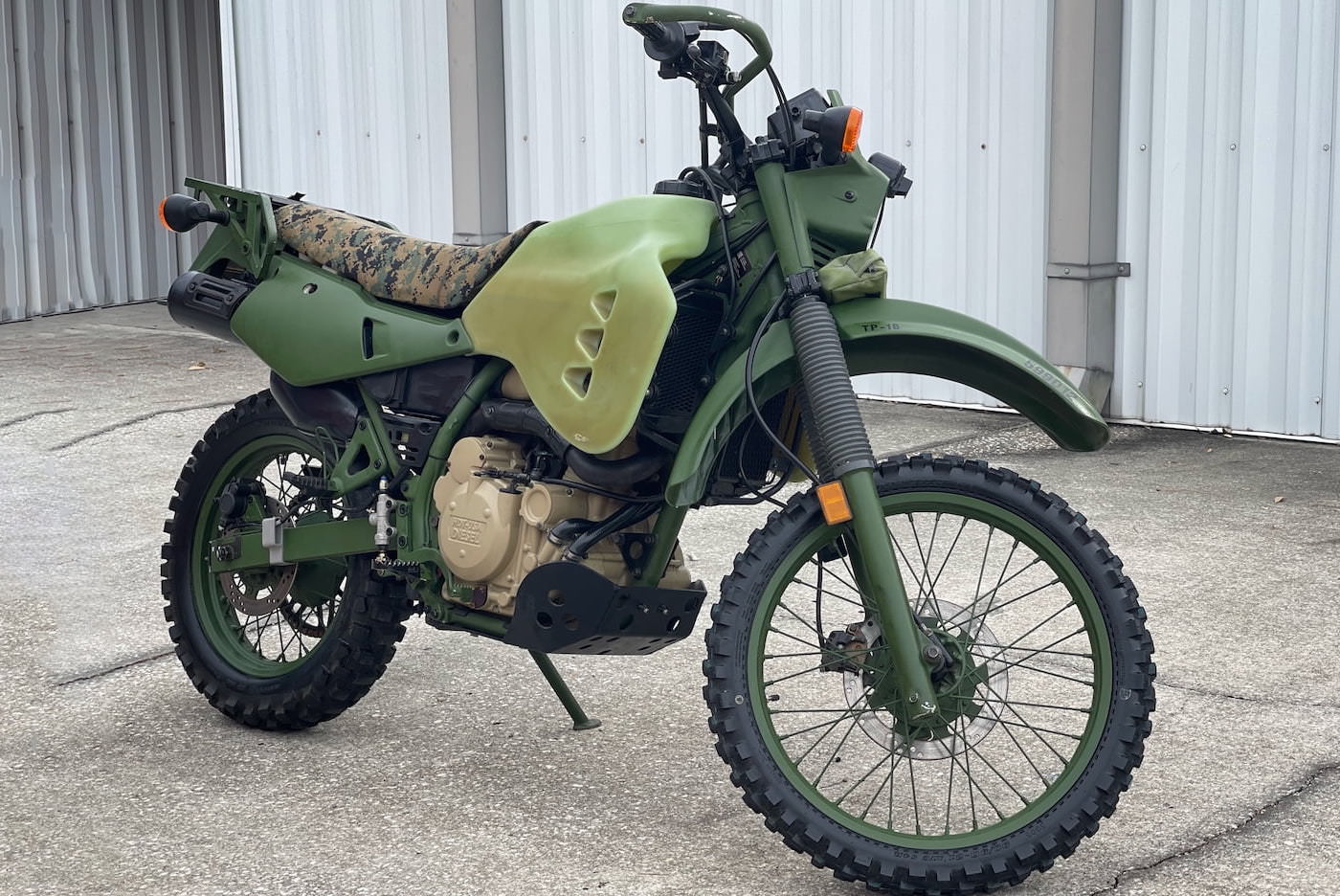
This may look like an ordinary drab green military Kawasaki KLR650 but it’s actually something altogether more special. It’s one of the rare bikes converted to run on JP-8, a grade of jet fuel similar to kerosene or diesel, for military use – in particular by Marines and Special Forces.
Converting the Kawasaki KLR650 gasoline engine to run on JP-8/diesel was no mean feat, large parts of the engine had to be completely replaced and many other modifications for military use were needed. The resulting bike now runs on the same JP-8 fuel as the B-2 Stealth Bomber and the Hummvee.
Fast Facts – The Kawasaki KLR650 Diesel
- The Kawasaki KLR650 was released in 1987 to meet surging demand for a tough, go anywhere dual sport motorcycle. It was essentially a two-wheeled Toyota Hilux, and every bit as indestructible.
- The KLR650 has remained in production from 1987 to the present day, there have been updates over time of course to add fuel injection, liquid-cooling, etc, but the core design of the bike has remained remarkably similar.
- The KLR650 is powered by a 652cc single-cylinder engine with a built in 5-speed gearbox. It has a chain drive to the rear wheel, a generously proportioned fuel tank, and standard telescopic forks up front with a monoshock rear end.
- The JP-8/diesel version of the KLR650 was developed by Fred Hayes, chief executive of Hayes Diversified Technologies, he kept the crankcase and gearbox but changed much of the rest of the engine, resulting in an ideal motorcycle for military use.
The Military And Their Motorcycles
The motorcycle was put into military use shortly after it was invented, it began to replace horses for dispatch and messenger duties in World War I, with all sides of the conflict quickly realizing just how useful the small, fast, and lightweight machines could be.
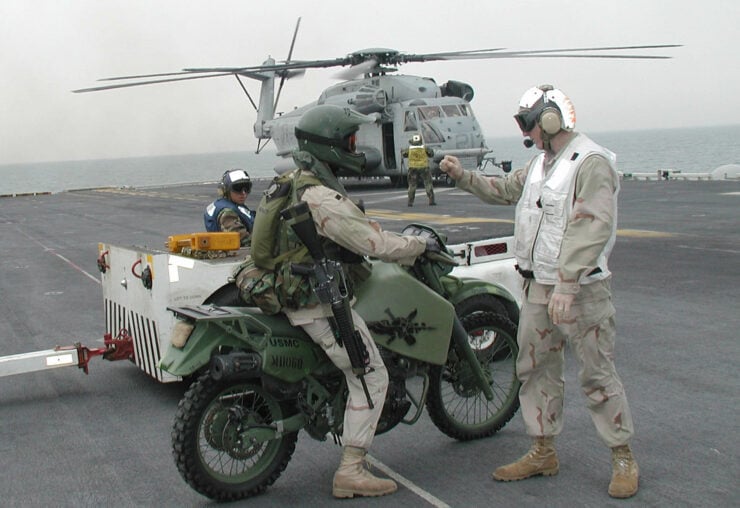

By World War II the motorcycle was well and truly established as a critical vehicle, both standard and sidecar versions were developed for military use including the likes of the American Harley-Davidson WLA, the German BMW R75, and the British Norton 16H.
Motorcycles were typically put to use in roles behind the front lines, though not always, with jobs like messenger dispatch, reconnaissance, convoy control, and escort duties.
Soldiers would undergo rigorous training in both on and off-road riding techniques, this was critical to their survival as the faster they went, the harder they were to shoot. Motorcycles would continue to prove their worth in many conflicts throughout the second half of the 20th century and today they’re considered essential.
One key issue has been the fact that motorcycles almost invariably run on gasoline, but most other military vehicles operate on diesel or similar fuels like JP-8 which is typically interchangeable with diesel. Diesel engines are not often lightweight and they don’t have the same instant throttle response enjoyed by gasoline engines.
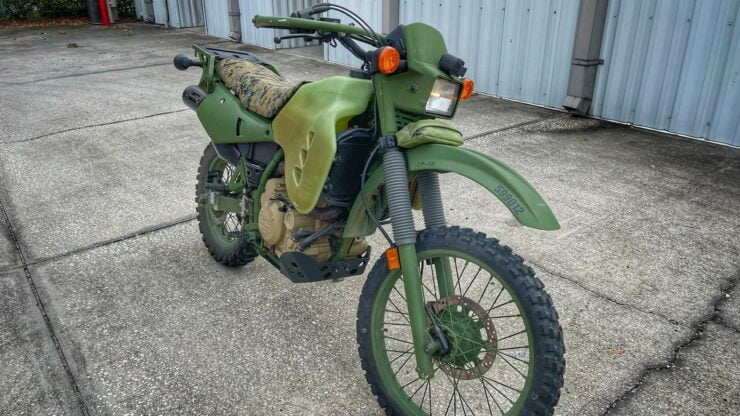

There have been some attempts to make diesel motorcycles over the years, often with lucrative military contracts in mind, but few have reached signifiant production levels. One that has is the Hayes Diversified Technologies version of the Kawasaki KLR650.
The Kawasaki KLR650 Diesel By Hayes Diversified Technologies
The military demand for a dual-sport motorcycle that can run on JP-8 has tempted a number of inventors and manufacturers over the years – largely due to the hefty military contract that could be won.
One of the very few to make an actual success of the idea is Fred Hayes, chief executive of Hayes Diversified Technologies, a military contractor based out of Hesperia, California. The decision was made early on to use the Kawasaki KLR650 as the starting point as it was already a popular military motorcycle – albeit in gasoline-powered form.
The KLR650 has a famously reliable 652cc cylinder single layout, this helped reduce complexity considerably, as the new engine design would keep the crankcase and its integral transmission but replace everything above it, including a new liquid-cooled cylinder barrel and cylinder head, as well as a new connecting rod, piston, fuel injection system, and exhaust.
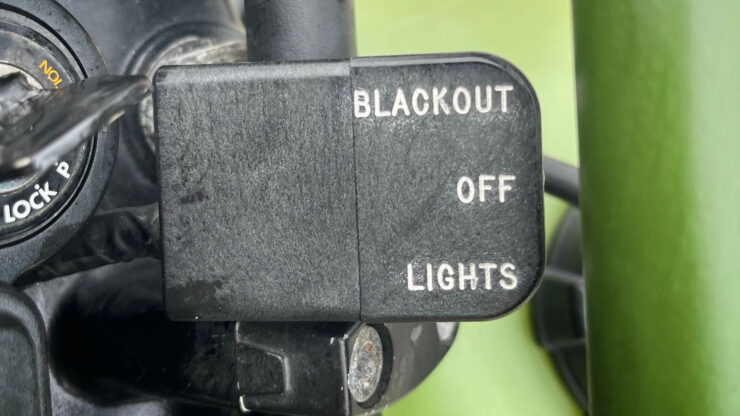

They also did away with the balance shaft designed to reduce vibration on the civilian model as it was deemed unnecessary and an unneeded additional complication. A few vibrations from the thumping single was nothing for a hardened Marine after all.
This kind of re-engineering is typically only taken on by major manufacturers, however Hayes and his engineering team proved more than capable. While they were working on the engine that went over the rest of the KLR650 with a fine-tooth comb to see what else might need to be replaced for military use.
They opted to upgrade the suspension front and back, they added wider foot pegs, a bash plate under the sump, an AGM-type battery, a tubular steel brush guard across the front of the handlebars, and an Acerbis 6-gallon fuel tank. They also added a blackout switch that immediately kills all of the lights on the bike, for reconnaissance use.
Once these changes had been applied to the prototypes and tested by the US military procurement system the first orders were placed. The model was named the M1030M1. Exactly how many have been built isn’t widely known, but it’s at least a couple of hundred and when examples do come up for sale they can sell for more than the price of a brand new (gasoline) KLR650.
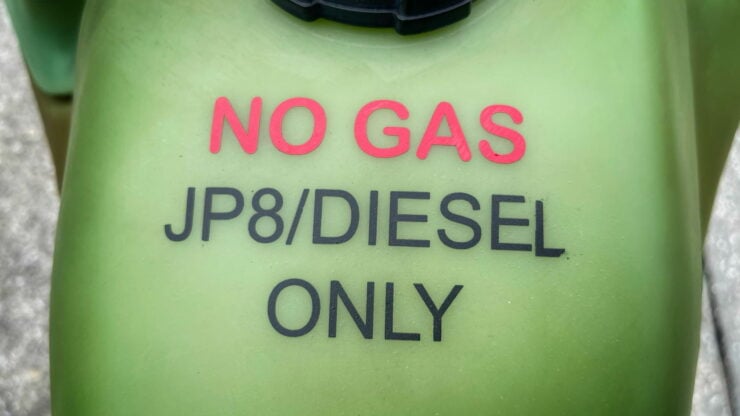

The performance of the model isn’t breathtaking to say the least, the horsepower and torque numbers aren’t known but by all accounts the bike is slow off the line and only builds speed gradually. That said, it is claimed to be capable of 90 mph and with fuel economy of 96 mpg at 55 mph it can cover vast distances on one 6 gallon tank.
The Kawasaki KLR650 Diesel Shown Here
The motorcycle you see here is one of those rare ex-military Kawasaki KLR650 diesels built by the team at Hayes Diversified Technologies.
This bike is a year 2000 model, the same type that was used in Iraq and Afghanistan by the US Armed Forces. The listing notes that this is the last and lowest mileage M1030M1 to be decommissioned with just 123 miles showing, though this would need to be independently verified. If true it would significantly increase its potential value.
It’s due to roll across the auction block with Mecum in Houston in mid-April, if you’d like to read more about it or register to bid you can visit the listing here.
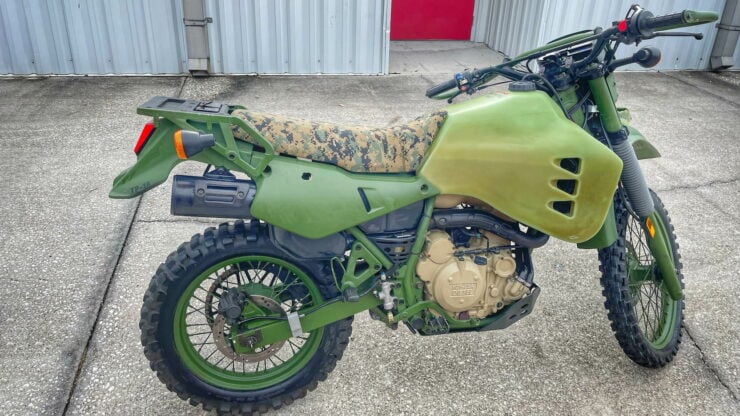
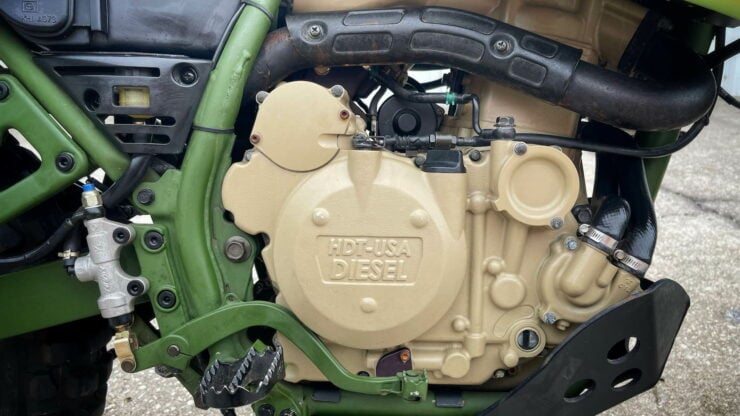
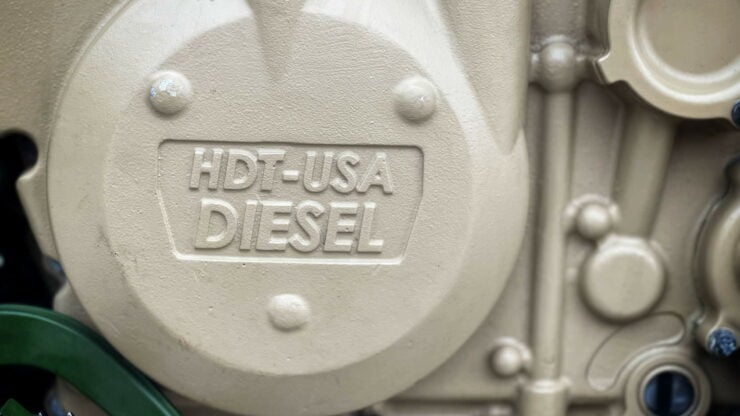
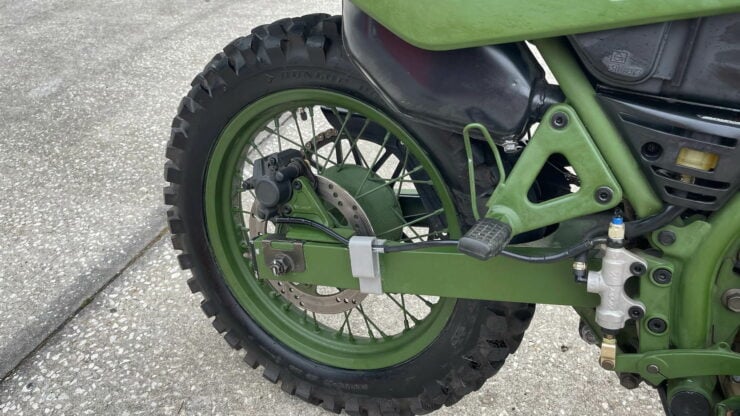
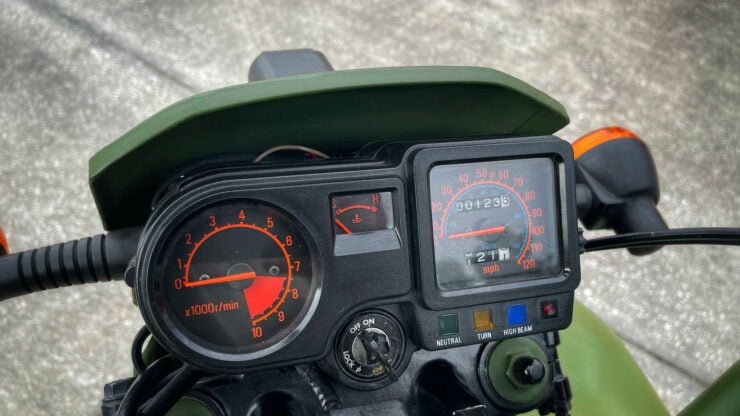
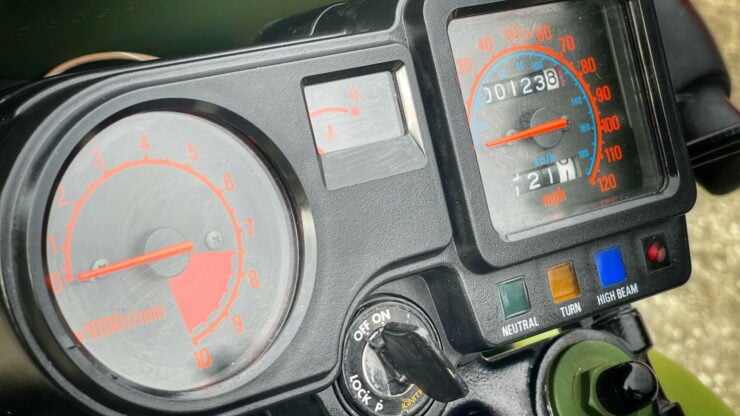
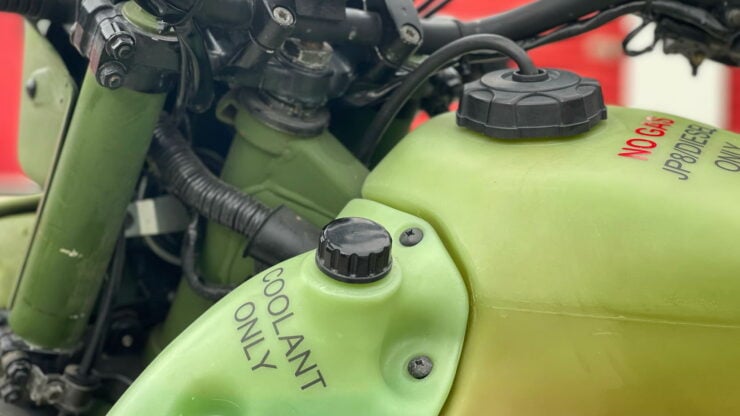
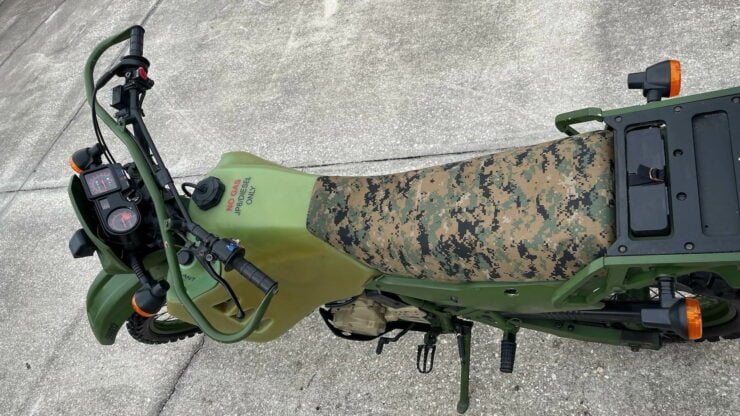
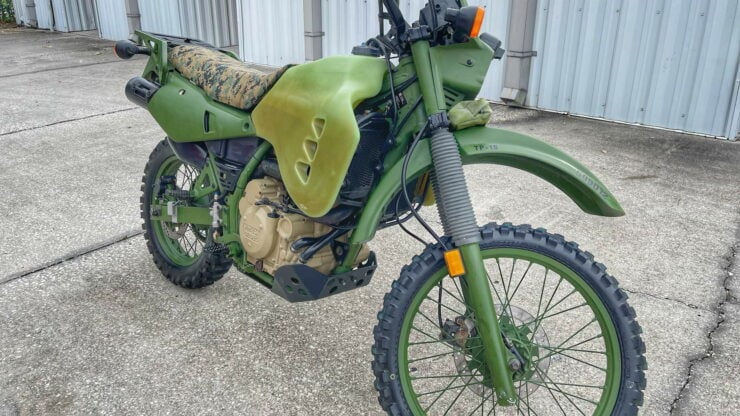
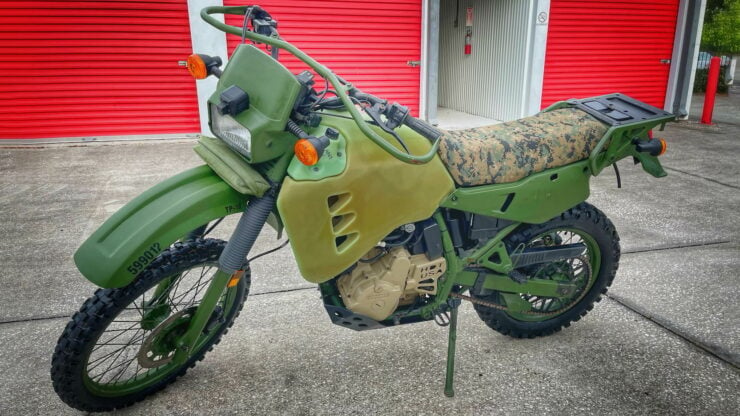
Images courtesy of Mecum

Articles that Ben has written have been covered on CNN, Popular Mechanics, Smithsonian Magazine, Road & Track Magazine, the official Pinterest blog, the official eBay Motors blog, BuzzFeed, Autoweek Magazine, Wired Magazine, Autoblog, Gear Patrol, Jalopnik, The Verge, and many more.
Silodrome was founded by Ben back in 2010, in the years since the site has grown to become a world leader in the alternative and vintage motoring sector, with well over a million monthly readers from around the world and many hundreds of thousands of followers on social media.

No comments:
Post a Comment